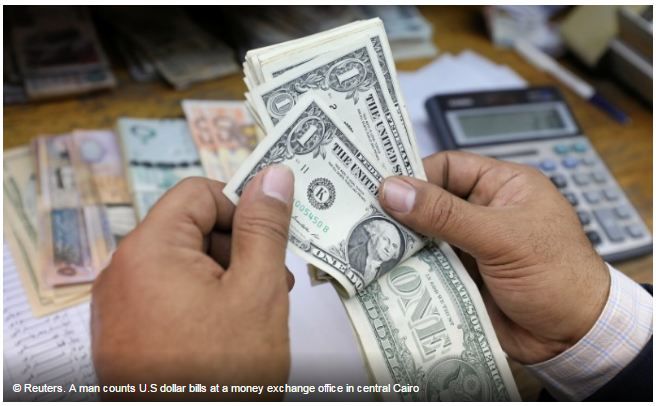The U.S. dollar traded lower against all of the major currencies Monday on the back of rising geopolitical tensions and uninspiring comments from Fed Chair Janet Yellen. We started the day with reports that China is deploying troops to its border with North Korea in case of U.S. strikes. Russia may have also shut its communication line with the U.S. Tensions are high and investors are nervous and this is overshadowing the central bank’s hawkish bias. Fed Chair Janet Yellen spoke on Monday and she expressed confidence in the housing market, domestic and global economies. However she also said productivity growth has been very disappointing and GDP growth has been lackluster given high job growth. With that in mind, she believes that a gradual pace of hikes is appropriate and the Fed wants to avoid being behind the curve. No U.S. economic reports were released on Monday and nothing significant is scheduled for Tuesday so the dollar will take its cue from U.S. rates and geopolitical risks. The main focus for the dollar this week after Yellen will be Friday’s retail sales report.
The euro may have rebounded against the U.S. dollar but its struggle around 1.06 is a reflection of weakness in the currency. Data hasn’t been terrible but investors are nervous about this month’s French elections. According to recent polls, leftist Melenchon is gaining popularity over Fillon, which has caused French yields to jump — and not for good reasons. The sudden emergence of Melenchon could draw voters away from Macron. German yields on the other hand continued to fall, driving the 10-year German—U.S. yield spread to its lowest level since 2006. While we have yet to see a similar decline in EUR/USD, if German yields continue to drop at a faster pace than U.S. rates, EUR/USD will extend its slide to 1.05. German investor confidence is scheduled for release Tuesay and while the election risk is centered on France, recent acts of terrorism in the region, the uncertainty of the French elections and Britain’s role in the European Union give investors reason to be cautious. Even if sentiment holds steady this month because recent developments haven’t made their way into the report, it is likely to soften the following month. One of the greatest risks in the market right now is in Europe and for this reason, it could be difficult for EUR/USD to rise.
Sterling, on the other hand, traded higher against all of the major currencies. While impressive, GBP/USD has yet to break above 1.2430, a level capped by the 20-50-100-day simple moving averages. The confluence of all these SMAs at a former support now turned resistance level is important because if GBP/USD manages to rise above 1.2450, we should see a much stronger rally. However the longer it struggles to exceed this level the greater the chance of a move down to 1.23. This is a busy week for UK data and sterling traders could be waiting to see how those economic reports fare before jumping into a trade. Consumer and producer prices are scheduled for release on Tuesday and stronger price growth would validate the hawkish dissent at the last Bank of England monetary policy meeting and drive GBP/USD higher. However if price growth slows, investors will start to worry about the implications for BoE policy, especially ahead of this week’s speech from Bank of England Governor Carney.
Monday’s best-performing currency was the Canadian dollar, which traded sharply higher on the back of higher oil prices and stronger Canadian data. Housing starts rose 253K in March on the back of surging condo construction. This was the largest annualized increase since 2007 and is a reflection of the strength of the housing market. The Bank of Canada meets this week and is widely expected to leave interest rates unchanged given the health of the consumer, manufacturing, housing and labor market. Combined with the positive impact that geopolitical tensions has on oil, we could see USD/CAD slip below 1.33 ahead of Wednesday’s rate decision. The New Zealand dollar also performed well although there was no specific reason for the currency’s strength. The Australian dollar, on the other hand, struggled to participate in the rally as housing data weakened and copper prices slipped. The strength of NZD could be related to AUD/NZD selling. There’s also a lot of tension in the region with the latest actions by China and the uncertainty of how the U.S. will deal with North Korea. Normally this is positive for gold but military conflict would send all of the high-beta currencies, including the Australian dollar, lower.





















































